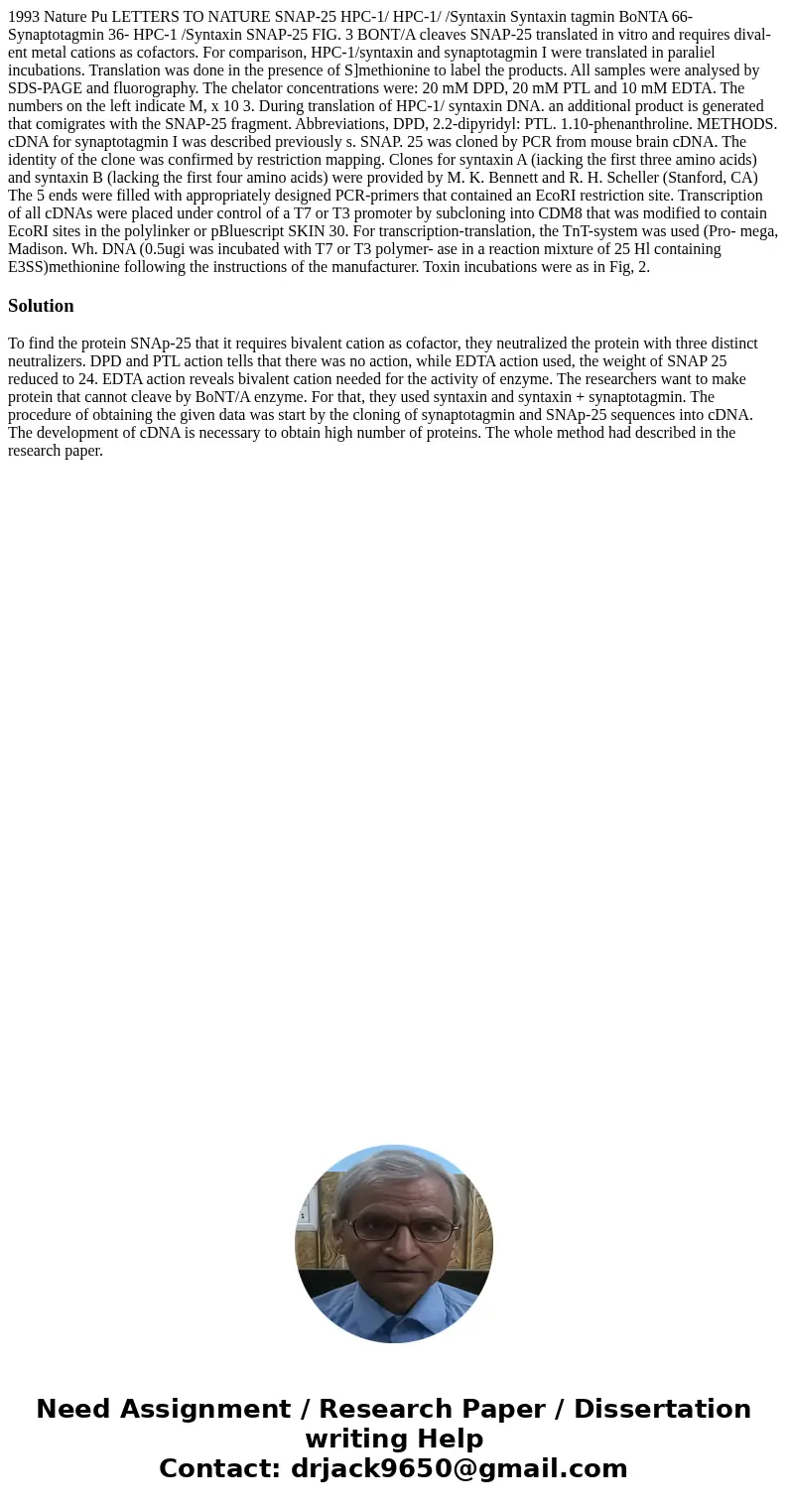1993 Nature Pu LETTERS TO NATURE SNAP25 HPC1 HPC1 Syntaxin S
1993 Nature Pu LETTERS TO NATURE SNAP-25 HPC-1/ HPC-1/ /Syntaxin Syntaxin tagmin BoNTA 66- Synaptotagmin 36- HPC-1 /Syntaxin SNAP-25 FIG. 3 BONT/A cleaves SNAP-25 translated in vitro and requires dival- ent metal cations as cofactors. For comparison, HPC-1/syntaxin and synaptotagmin I were translated in paraliel incubations. Translation was done in the presence of S]methionine to label the products. All samples were analysed by SDS-PAGE and fluorography. The chelator concentrations were: 20 mM DPD, 20 mM PTL and 10 mM EDTA. The numbers on the left indicate M, x 10 3. During translation of HPC-1/ syntaxin DNA. an additional product is generated that comigrates with the SNAP-25 fragment. Abbreviations, DPD, 2.2-dipyridyl: PTL. 1.10-phenanthroline. METHODS. cDNA for synaptotagmin I was described previously s. SNAP. 25 was cloned by PCR from mouse brain cDNA. The identity of the clone was confirmed by restriction mapping. Clones for syntaxin A (iacking the first three amino acids) and syntaxin B (lacking the first four amino acids) were provided by M. K. Bennett and R. H. Scheller (Stanford, CA) The 5 ends were filled with appropriately designed PCR-primers that contained an EcoRI restriction site. Transcription of all cDNAs were placed under control of a T7 or T3 promoter by subcloning into CDM8 that was modified to contain EcoRI sites in the polylinker or pBluescript SKIN 30. For transcription-translation, the TnT-system was used (Pro- mega, Madison. Wh. DNA (0.5ugi was incubated with T7 or T3 polymer- ase in a reaction mixture of 25 Hl containing E3SS)methionine following the instructions of the manufacturer. Toxin incubations were as in Fig, 2. 
Solution
To find the protein SNAp-25 that it requires bivalent cation as cofactor, they neutralized the protein with three distinct neutralizers. DPD and PTL action tells that there was no action, while EDTA action used, the weight of SNAP 25 reduced to 24. EDTA action reveals bivalent cation needed for the activity of enzyme. The researchers want to make protein that cannot cleave by BoNT/A enzyme. For that, they used syntaxin and syntaxin + synaptotagmin. The procedure of obtaining the given data was start by the cloning of synaptotagmin and SNAp-25 sequences into cDNA. The development of cDNA is necessary to obtain high number of proteins. The whole method had described in the research paper.

 Homework Sourse
Homework Sourse